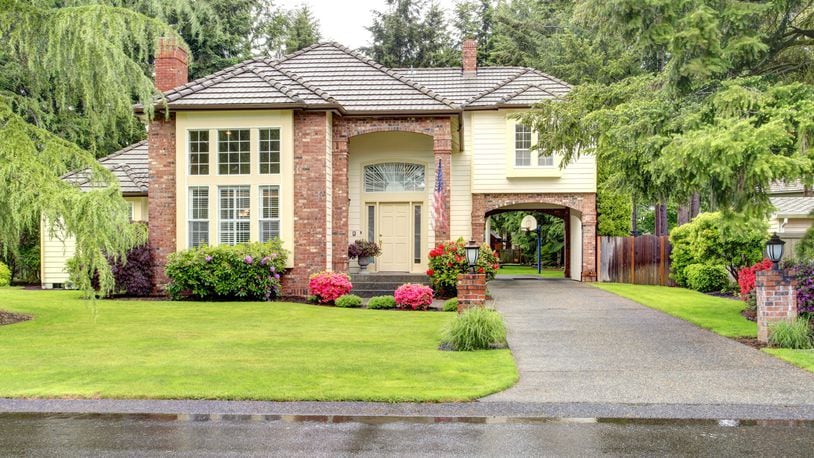VINYL
Vinyl siding is known for its many benefits: It’s tough, requires little to no maintenance and doesn’t need to be painted. However, while manufacturers are creating vinyl siding that imitates materials like wood, it still doesn’t look quite as realistic.
ENGINEERED WOOD
Engineered wood is made of wood fiber and resin, giving you the look of wood at a lower price point. The material is durable and comes in many different styles. It does require occasional repainting, however, and it is so new that its long-term durability hasn’t been thoroughly tested.
METAL
A final affordable option is metal siding. It’s resistant to fire, insects and rot, and it is relatively low maintenance. Metal siding is a popular option for sheds and other outbuildings. But it is also susceptible to scratching and denting.
MID-RANGE OPTIONS
WOOD
Wood siding is one of the most popular and proven options to consider. It’s aesthetically pleasing and easy to work with. However, it has its downsides. It requires more maintenance than many other materials and it’s vulnerable to rot and insects. It can also easily move out of the mid-range price category into premium if you choose a high-end wood species or product.
STUCCO
Stucco siding is popular in the southwest and coastal environments because of its weather- and moisture-resistant properties. Stucco offers durability and good looks with low maintenance and a moderate price. However, installing stucco is labor-intensive and requires the skill of an experienced pro.
FIBER CEMENT
Fiber cement siding is made from a mixture of cellulose, sand and cement, which makes it incredibly durable, resistant to rot and termites, and fire-resistant. One disadvantage is its tricky installation process. You’ll need an experienced pro for the best results. Another is it needs to be installed on a clean wall, so you’ll likely have to remove your old siding.
PREMIUM OPTIONS
BRICK
Brick siding is durable, nearly maintenance-free, resistant to rot and insects, and fire-resistant. Plus, you can get it in a number of different colors, sizes and textures. This material will protect your home for years to come — and look good doing it.
SYNTHETIC STUCCO
Synthetic stucco is a multi-layered insulating coating, also known as exterior insulation and finish systems. It is more crack-resistant and energy efficient than standard stucco. However, it’s less durable and can be susceptible to water damage, making it a less-than-ideal choice for wet environments.
SYNTHETIC STONE
Synthetic stone siding is manufactured to look like real stone, giving you the look of genuine stone without the steep cost. It’s also fire-resistant, bug-resistant and low-maintenance. It weighs substantially less than actual stone, so it’s easier to install.
As you research siding that falls within your budget, check the materials against your expectations for energy efficiency, aesthetics and longevity. Get in touch with a local siding professional for further advice and be sure to hire a reputable pro for a top-quality installation.
———
Lauren White is a reporter for HomeAdvisor, an online marketplace connecting homeowners with trusted service professionals to complete home projects. Visit HomeAdvisor.com
About the Author
